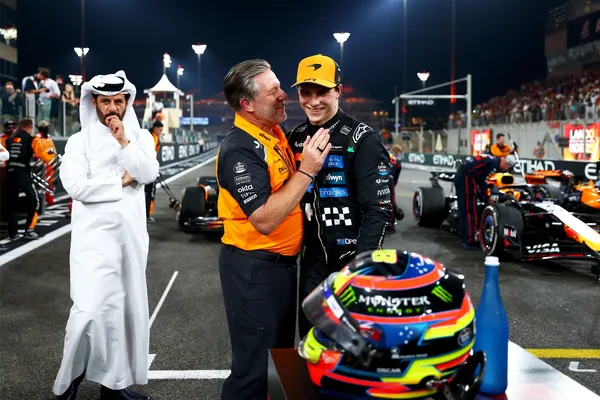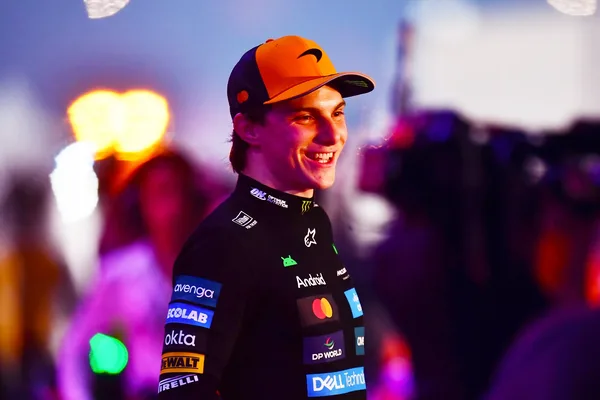An in-depth analysis of the F1® Abu Dhabi GP 2022
Monday, 21 November 2022
Thanks to Versor, the official AI Partner of the Australian Grand Prix.
In the final race of the year, Max Verstappen once again claimed victory in dominant fashion at the Abu Dhabi Grand Prix, further extending his record for most race wins in a single season to 15. Meanwhile, Charles Leclerc edged out Sergio Perez by just 1.3 seconds to take P2, both in this Grand Prix and in the World Championship standings, denying Red Bull of their first-ever 1-2 finish in the Driver’s Championship.
The Yas Marina Circuit is a 5.281km track located on the Yas Island, a man-made island located 20km east of Abu Dhabi’s main downtown island. It features attractions such as a golf course, shopping centres, hotels, and a Ferrari-branded theme park, it is also the most expensive racing circuit in history, with an estimated construction cost of $1.322 billion USD. The circuit provides a challenge for engineers to find the optimal aerodynamic balance as the profile of the first two sectors is in stark contrast to the final segment. The early stages of a lap run through fast sweeping corners, which are only broken up by a hairpin at Turn 5, which leads onto the 1.2km back straight, the second longest straight on the calendar as well as the best spot on the track for overtaking opportunities, and a chicane at Turns 6 and 7. However, whilst sectors 1 and 2 are all about high downforce and top speeds, Sector 3 places the brakes and rear tyres under immense stress with multiple slow-to-medium speed corners in quick succession, providing a strong test of a driver’s skill and precision to the test, especially at Turn 14 where drivers are forced to come dangerously close to the barrier in order to get the most out of a lap.
Looking at the race pace plot for the podium finishers highlights what has been a consistent theme on countless occasions throughout the season. Verstappen started in pole position and was in complete control from start to finish, only surrendering the lead of the race for a fleeting moment after he made a pit stop just one lap before Leclerc. Verstappen once again looked to be a class above his rivals, guiding his car to victory by nearly 9 seconds with seemingly the greatest of ease in what was little more than a casual Sunday stroll.
Whilst Verstappen was all by himself at the front, the aforementioned battle for the decisive second place between Leclerc and Perez provided the bulk of the drama for this race. The fight was ultimately decided due to the alternate strategies the teams ran, with Ferrari opting for a one-stop strategy whilst Red Bull decided to opt for a two-stop plan after Perez’s pace dropped off dramatically during his second stint.
After changing to a fresh set of hard tyres on lap 33, Perez’s final stint of the race saw him lay down blisteringly fast lap times compared to the drivers ahead of him; however, Perez’s extra pit stop led to him losing 21 seconds over his rival and having to fight his way through the traffic he exited the pit lane behind. These factors, coupled with Leclerc’s impressive tyre management, where he showed no signs of any tyre degradation throughout the 25 laps he spent on the hard compound tyres based on the consistency of his lap times, were the keys to Leclerc securing second place.
Taking a closer look at the telemetry in this battle between Leclerc and Perez reveals an interesting detail that may just have been a major key in the fight. Early on in the race, Leclerc had a significant advantage in Sector 3; the plot above for Lap 24, where he set a lap time of 1:30.465, almost half a second quicker than Perez’s 1:30.927, the most consequential difference between the two drivers is on the approach to turn 16, the final corner of the circuit, here Leclerc eases off the throttle ever so slightly to 76%, whilst Perez reduces his throttle all the way down to 39%, this difference led to Leclerc being an average of 15km/h faster throughout this section of the lap, allowing him to post a Sector 3 time of 33.048 seconds compared to Perez’s 33.604.
However, this advantage for Leclerc did not last throughout the race, as can be seen on the plot above comparing the telemetry for both drivers on Lap 50. Here Perez’s throttle is significantly higher than it was earlier, increasing to around 65% from this point of the race, reducing Leclerc’s speed advantage to an average of just 3km/h, this along with Perez’s fresher tyres allowed him to gain back the advantage in sector 3 setting a time just under seven-hundredths of a second faster than Leclerc in the final segment of the lap.
The exact cause of this factor is difficult to pinpoint without the depth of telemetry data that only Red Bull has access to; however, we can speculate that it had something to do with the setup of the car that Red Bull ran as Perez’s teammate Verstappen also followed a similar pattern in the race whereby his throttling and speed was much lower than Leclerc’s in the section between Turns 15 and 16 early on in the race before it increased to a comparable level in the later stages. The most likely cause of this is either due to the reduced weight of the car as the fuel load went down over the course of the race, which changed the behaviour of the aerodynamics or Red Bull realising a mistake in their setup and advising their drivers to change a setting such as the brake bias or the differential.
Perez and Red Bull will be disappointed that second place in the Driver’s Championship slipped through their fingers in the last race of the season; however, that disappointment shouldn’t last too long following the most successful season in history for both the driver and the team with Red Bull claiming 17 race wins, of which Perez contributed two was. Meanwhile, Leclerc will be hoping to do one better next season and maintain the fight he brought to Verstappen in the early stages of this season in an attempt to become the first Ferrari driver to win the World Championship since Kimi Räikkönen in 2007.




